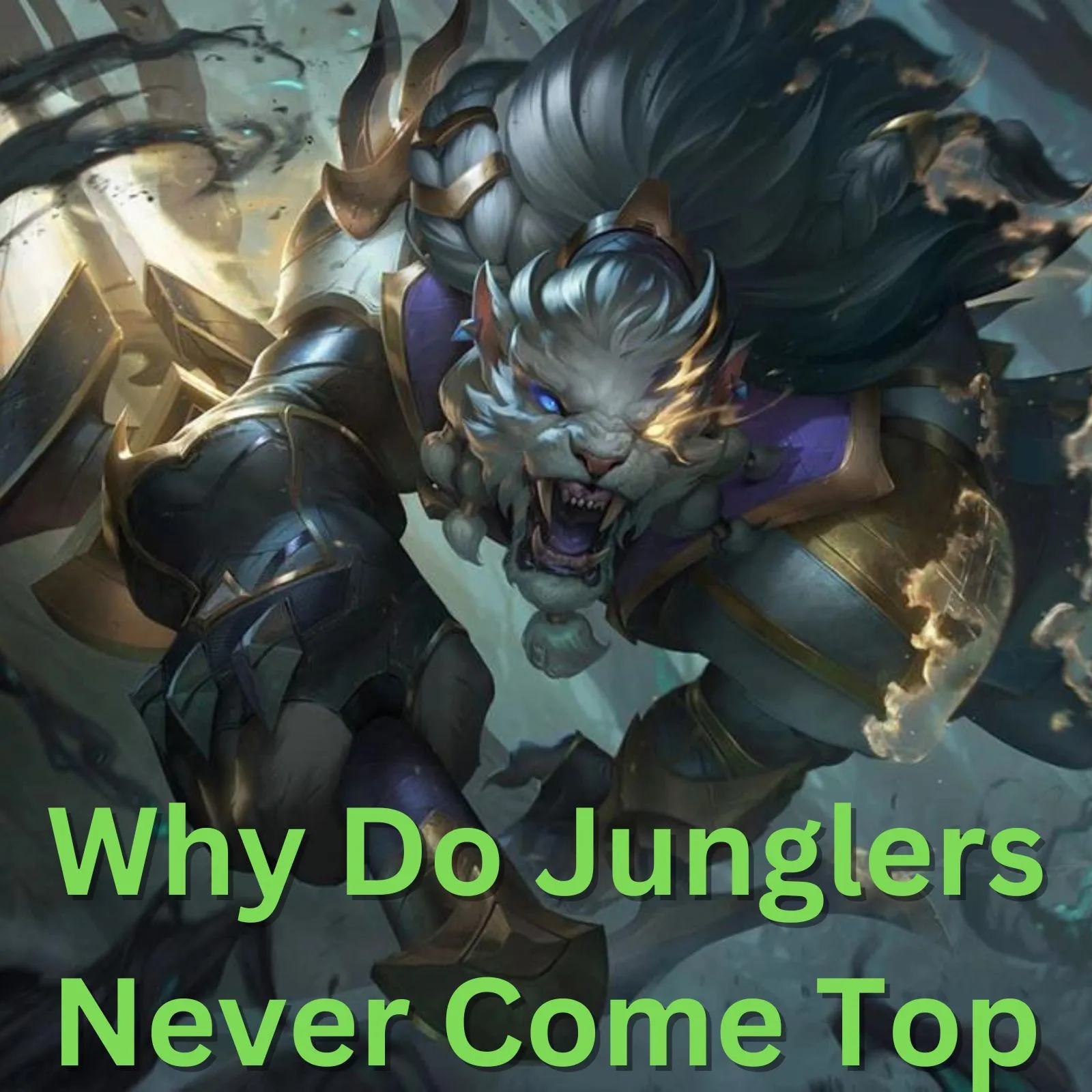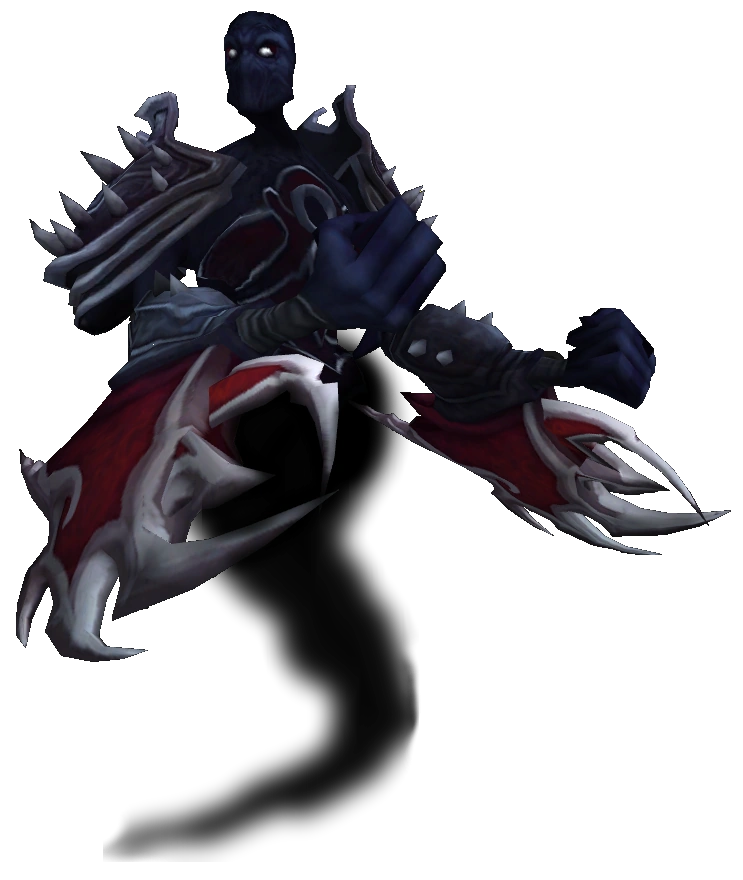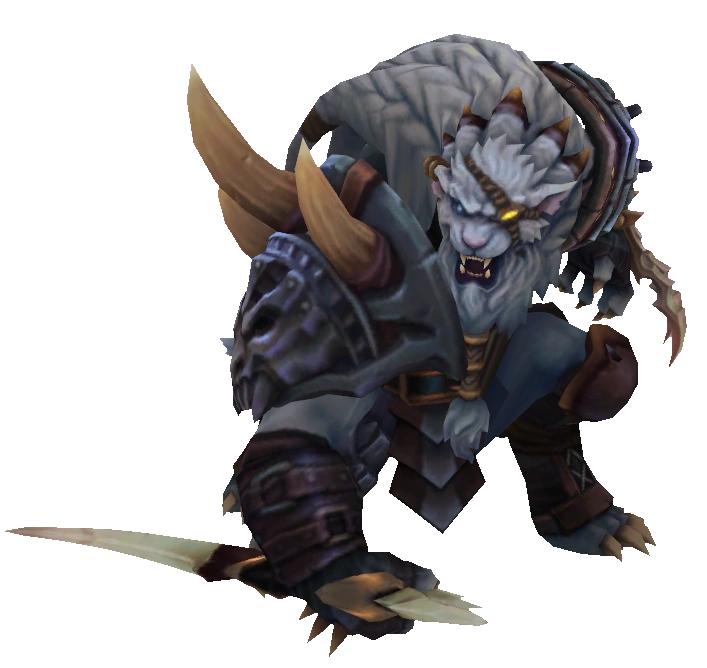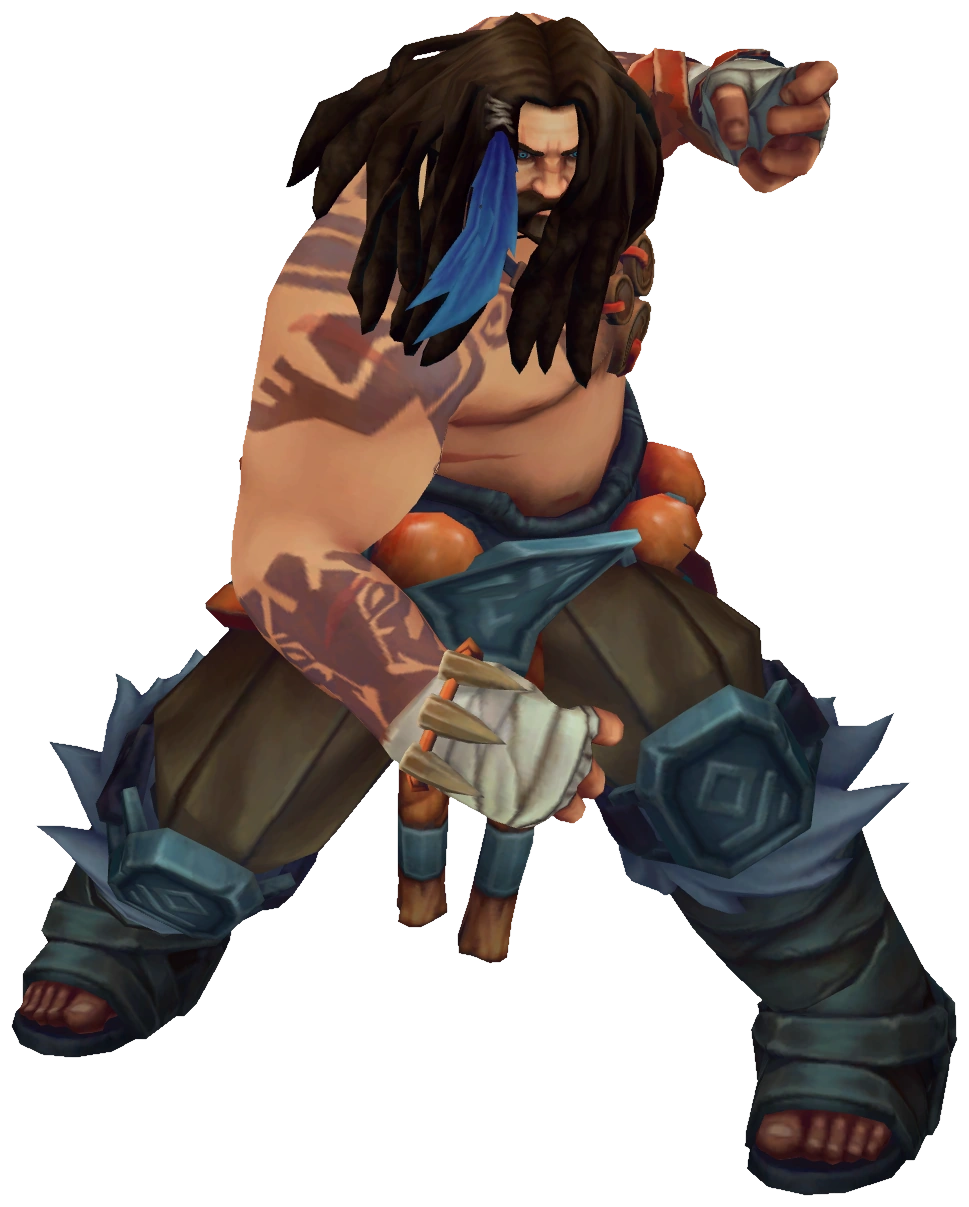
Exploring the mystery of why Junglers rarely venture to the top in strategic gameplay, it’s pivotal to understand that their role is steeped heavily in resource management and controlling the game’s pace, which often culminates in prioritizing mid and bottom lanes.
I think it’s important to first identify that the decisions of junglers in a game of League of Legends is contingent on countless game-specific variables. The mantra, “Why do junglers never come top,” can be addressed by considering these predominant aspects: ‘Risk-Reward Trade-Off’, ‘Objectives Value’, and ‘The Island Effect’.
| Aspects | Explanations |
|---|---|
| Risk-Reward Trade-Off | Jungler’s decision-making heavily relies on maximum payoff with minimal risk. Top lane often holds one versus one, more durable champions aka tanky warriors, left-wingers, or resistance-based mages, rendering successful ganks tougher than those mid or bottom. |
| Objectives Value | The high value of Dragon early-mid game lies near bot lane, alluring junglers to prioritize that area for control. Assisting bottom lane increases chances of securing this crucial objective than happening across top. |
| The Island Effect | Often labelled an island due to its comparative isolation, top laners are generally hardier, self-sustaining champions designed to fend off without substantial assistance. A competent top-laner can manage their lane well enough allowing the jungle to concentrate elsewhere. |
Digging deeper into these factors:
Risk-Reward Trade-Off
A jungler’s credibility weighs heavily on effective ganking – devising strategies for ambush kills or driving enemies from their lane. Contemplating a gank, every skilled jungler gauges the feasibility to pull off a successful kill or summoner spell snatch.(source) Ganking terrains with protagonists wielding remarkable escape mechanisms or supreme survivability present a sophisticated ordeal. Centaur-like champion Hecarim noted, “War is eternal… as am I.”, aptly captures the resilience typical of top laners, which negates numerous attempts to strike them down. Hence, to maximize probability of triumph rather than butt heads with an unyielding top opponent, junglers find better prospects among the squishy ADCs and Supports on bot lane or the volatile assassins and mages on mid.
Objective’s Value
League gameplay revolves around strategic objectives- from epic monsters to inhibitors. Prioritization is frequently given to Dragon over Rift Herald – their appeal distinguishing them from one another; multiple dragons slain grant permanent bonuses essential to a team’s victory. The Dragon’s geographical vicinity to bot casts a preferential predisposition towards this lane (source). Famously voiced by Lee Sin, “Master yourself, master the enemy.”, implies controlling Dragon which significantly influences the game outcome can act as mastering enemy indirectly, further amplifying why junglers extensively roam the bottom side.
The Island Effect

Top laners exhibit profound endurance embodying self-reliant, provisionally needy champions who stand unperturbed under relentless onslaughts. A subtle incapacity looms refereeing the absence of external aid frequently. Darius, a known low maintenance top laner quipped, “They will regret opposing me”, reinforcing individual self-dependence hallmarking the position. Winged by such doughty bruisers, junglers channel their efforts to lanes more susceptible, to fortify these areas, fulfilling their teams’ needs holistically.(source)
In exploring the strategic role of junglers in League of Legends (LoL), we encounter an interesting question that has been raised by many top laners: “Why do junglers never come top?” To satiate this curious inquiry, let’s delve deeper into the functionality of junglers and the strategic considerations that accommodate this seemingly elusive behavior.
The Role of Junglers:
Within a game placement stratagem, as sophisticated and dynamic as LoL, each position plays a distinctive part. The ‘jungler’ is one such indispensable role. Being away from the lanes initially provides them with a bird’s eye perspective, allowing them to rush to assist wherever needed. Effectively filling their purpose will often necessitate focusing on specific areas and sometimes overlooking others. League of Legends Official Patch Notes, consistently adhere to developing a more balanced gameplay experience for all the roles.
| Role of Junglers |
|---|
| Maintaining control over neutral objectives such as Dragon, Baron, and Rift Herald |
| Ganking lanes to shift the balance of power |
| Control vision throughout the jungle to negate enemy strategies |
With regards to the persistent queries regarding junglers’ particular avoidance of the top lane, there are several reasons underpinning this choice:
Strategic Positioning and Objectives:
Early in the match, the bottom side of the map is loaded with critical objectives like Dragon. Junglers must maintain proximity to these objectives to ensure control, thus leading them to prioritize and pay more attention to the mid and bot lanes. Once the much-coveted Dragon is slain, Jungle focus can then shift towards other lanes and objectives, including the top lane.
Tankiness and Self-sufficiency of Top Laners:
Top laners often play champs with heavy defense and high sustain, enabling them to safely farm even when pressured. This allows the jungler to de-prioritize the top lane ganks to focus on squishier targets elsewhere who can’t survive under similar stress. Hence, the perceived issue of ‘junglers never coming top.’
Risk Factor:
Failures in top lane have lesser repercussions compared to unsuccessful attempts in the bottom lane. A blunder at bottom lane, where there are two enemy champions, could result in double kills and lost control of the vital dragon pit. Compare this to a failed top lane attempt, the risks imply that resources might be better spent helping elsewhere.
As professional player Lee “Faker” Sang-hyeok once remarked, “Playing without making calls is like going into battle blindfolded.” A well-executed strategy, communication to understand the crucial role of junglers, and clarity on why they seldom venture ‘top,’ creates not just better individual players, but inherently synergistic teams.
By comprehending the enduring relationship between risk and reward within LoL, those often-ignored top laners may start to appreciate their jungler’s ostensibly infrequent visits. It’s important here, to remember that ‘good things come to those who wait,’ which especially holds in League of Legends!
The top lane in League of Legends, being deceptively silent and secluded, brings forth both challenges and opportunities for the player. The complexity arises when players wonder why junglers often seem to neglect the top lane. Understanding this phenomenon requires a deeper analysis of game dynamics and strategic initiatives.
Challenges of Playing Top Lane
- Isolation: The most significant challenge of playing in the top lane is feeling isolated from the rest of the team. Physical distance plays a role, and there is often a preoccupation with one-on-one matchups that can deter junglers from assisting.
- Lack of Vision: Holding control over vision becomes a crucial element while maintaining dominance in the top lane. Given the relatively larger distance between the river’s two bushes compared to other lanes, it gets harder to ward efficiently and keep track of enemy jungle movements.
- Solo Defence: A top laner is primarily on their own when defending towers; receiving less assistance from junglers or other teammates makes this challenging.
Opportunities of Playing Top Lane

- Snowball Potential: Despite the aforementioned challenges, the isolation of the top lane can also be an advantage. A victorious matchup can create a potent snowball effect as the opponent loses access to resources and falls behind in XP and gold.
- Experience and Gold Gathering: Unlike the bot-lane which divides its resources between the ADC and support, top laners get exclusive rights to minion experience and gold in their lane, which allows faster leveling.
- Split Pushing: Successful top laners can dominate through split-pushing strategies when ahead in the game, forcing multiple enemies to respond and relieving pressure off other parts of the map.
Many factors come into play when deciphering this perception of ‘Junglers Never Come Top’. The bottom lane offers double the kills, dragons provide team-wide benefits, and mid-lane holds centrality in terms of architecture and objectives. Therefore, junglers often have more incentive to devote their attention to these areas.
In reality, junglers do pay visits to the top lane but at optimal times. These include when the top laner has a clear advantage, when it gets possible to dive the enemy under tower, or when there is potential for a herald play post-10 minutes. It’s not so much about junglers never coming top as it is about them making the most efficient use of time and resources. As “Dyrus” one of League’s infamous top laners once said, “To be a successful top laner, you need to be independent”. Understanding this dynamic offers more clarity and better performance for the formidable top lane players in the world of League of Legends.
Jungle positioning is a vital component of the strategic depth in League of Legends. As a player, the role of a jungler can be complex due to its unique relationship with the entire map and its immerse impact on balance. Understanding jungle positioning can shed some light on an age-old question: “Why Do Junglers Never Come Top?”.
Understanding Jungle Positioning
In League of Legends, the map is divided into distinct areas – three lanes (Top, Mid, Bottom) and the jungle. For any strategic or objective-oriented team, the jungle serves two primary roles:
- Resource Collection: The jungle is filled with neutral monsters providing experience points and gold needed for leveling up and item purchase respectively.
- Map Control: Apart from resources, the jungle offers critical control points that influence the overall game dynamic such as Dragon, Baron Nashor, Rift Herald, Scuttle Crabs, and more. These objectives provide buffs and game-changing advantages depending on their corresponding rewards.
The Impact of Jungle Positioning on Map Balance
The decision on where and when a jungler shows up on the map has significant impacts on the balance between teams. Invasion, ganking, buff and objective control are all influenced by where the jungler decides to position themselves at any given time. As Kyle “Kyahaha” Cox (an advanced League player) says, “To be an effective jungler, one has to implement smart positioning strategies that incorporate the elements of surprise and unpredictability.”
At first glance, you might consider sending a jungler top lane quite often to assist with taking down top laners – but that would compromise their other responsibilities of resource collection and maintaining balance elsewhere. The top lane is generally left to champions who can endure prolonged fights and fend for themselves, whereas mid and bot lanes often need additional support due to multiple enemy players and smaller map width making them more vulnerable to ganks.
A simple analogy
- imagine if you had sent your queen (jungler) in chess primarily to one side of the board, it leaves the other side open for the opponent’s pieces to freely maneuver and dominate.
This notion contributes significantly to why most junglers, especially during the early phases of the game, may seem to rarely visit the top lane. There are important dragon objectives located near the bottom lane which can greatly swing the game in favor of the team that secures them, hence requiring more frequent appearance and control of the jungler around this side of the map.
Therefore, while it’s not correct that junglers never visit the top lane, it’s true that the unique circumstances and responsibilities of the jungler’s role may make it seem like they’re frequently absent from the top lane area.
Is Neglecting Top Lane Right?
Neglecting isn’t the right term to use in this case. It’s a matter of priority and opportunity cost based on game state, champion types, and objective timers. A good jungler must continually adapt their strategy to best serve their team needs and maintain map control and balance.
Evolving Game Strategies

As the game progresses, these dynamics can change. A high-level jungler understands the need to rotate throughout the whole map as necessary, including top lane, for objective control, additional turrets, or catching out isolated enemies. So, long answer short; Junglers do come top, just less so early in the game. It’s really all about balanced map control and knowing where on the map you’ll have the most impact at any given time, a sentiment echoed by pro player Lee “Faker” Sang-hyeok: “It’s not the champion, nor the lane, but the decisions you make that determine a game.”
So next time you notice a jungler, spare a thought for the complex role they play in creating balance within the game, transforming a chaotic virtual battlefield to something resembling a beautiful dance of strategy, reaction, and control.
When diving into the complex and dynamic role of jungling in League of Legends, understanding a player’s decisions can seem daunting at first. A frequent query that often arises does so from the top lane perspective – “Why do junglers never come top?” It may seem like an ignored plea, but rooted within those decisions lie multifaceted aspects of strategy, primarily the prioritization of objectives over lanes.
To grasp this concept more accurately, we need to take a Jungler’s Perspective: Prioritizing Objectives Over Lanes. On the surface level, it appears as though the jungler is benignly withholding aid, but each decision from a jungler revolves around winning the game by taking control of key objectives rather than simply focusing on individual lane victories.
| Objective | Reason to Prioritize |
|---|---|
| Dragon | Dragons offer team-wide buffs, which significantly increase team strength over the duration of the game. Also, securing four dragons allows for the Dragon Soul, substantially increasing the likelihood of winning. |
| Rift Herald | The Rift Herald can be used to break vital turrets, helping to open up the map and push in further towards the enemy nexus. |
| Baron Nashor | Baron Nashor provides a buff that increases team stats and most notably empowers minions, making sieges far more potent. |
| Elder Dragon | A stronger version of Dragon, granting a powerful buff to damage output when held by a team. This can provide a clutch mechanism in close games or a way to secure victory in advantageous situations. |
Although the furthest objective from the top lane, the dragon is usually a prime focus. Its first spawn occurs earlier than Rift Herald (a more accessible objective for top side), and its team-wide buffs become long-term investments towards game victory. Hence, junglers often prioritize their early game towards bot lane and dragon.
Likewise, top lane becomes more attractive post-14 minutes due to Rift Herald’s despawn and Baron Nashor’s spawn. An important strategy can involve ganking top lane to secure these objectives, hence seeming to neglect top until then.
DoubleLift, an esteemed former LOL professional, has stated: “Junglers think about what lanes they are going to affect based on how that’s going to translate into vision, objectives, towers, wins.”
Each jungler’s decision operates within real-time adaptive judgments, predicated upon your team’s composition, opponent strategies, potential global benefits among others, rather than personal resentment against top laners. Understanding this, as a player in any position, especially a top-laner, will greatly enhance your League of Legends experience and performance.
Decoding player behavior in League of Legends often involves complex analysis, much like understanding the behavioral patterns within a labyrinth full of unique champions and evolving game mechanics. Let’s delve into the fascinating reason as to why junglers often seem to overlook the top lane.
Firstly, let’s understand the basic game structure. Typically, there are three lanes – top, middle (mid), and bottom (bot), and the jungle area populated by neutral monsters. Each has its distinct role in achieving victory. A key consideration for any jungler is the ‘value’ associated with each lane. This value derives from multiple factors such as kill potential, objective control, and overall influence on the game’s outcome.
| Lane | Value Factors |
|---|---|
| Top | Solo lane, fewer kills, less direct impact on major objectives |
| Mid | Central location, high kill potential, greater influence on roaming and objectives |
| Bot | Presence of two teammates, Dragon proximity, higher play-making potential |
A jungler’s minimal intervention in the top lane might appear neglectful but can be traced back to this inherent valuation system. Top laners are typically tanky champions or sustain-focused bruisers able to withstand pressure while having a relatively low kill potential due to their abilities and base stats. In essence, the risk-reward ratio isn’t as attractive in the top lane compared to the mid or bottom lane. Thus, ‘camping’ or frequently ganking the top lane may not yield fruitful results for the team.
The pro-player, “TheOddOne,” once stated, “Junglers are the supports of the solos,” elucidating the necessity for junglers to optimize resources towards the most impactful areas across the map [1]. Mid laners have easier access to both the top and bottom areas, making them substantially valuable. Bot lane, on the other hand, has two champions, doubling both the kill potential and danger.
Additionally, the bot side dragon is a game-altering objective, thus creating a natural inclination for junglers to prioritize it.
However, it’s important to note that good junglers understand when they need to adapt to dynamic gameplay. For instance, if a top laner is significantly ahead or carries vital crowd-control skills, junglers can prioritize securing advantages in the top lane. Steven “Santorin” Hansen has mentioned before, “You have to be flexible as a Jungler” [2], highlighting that exceptional jungle play requires aptitude for reading the flow of the match and responding accordingly.
To sum up, while it seems the junglers neglect the top lane, it’s largely due to the strategic allocation of resources based on in-game objectives and reward probability.
One of the puzzling questions that often come across in the tactical universe of League of Legends is: why do junglers never come top? As a grizzled veteran who has spent countless hours on the Summoner’s Rift, I yearn to shed light on this strategic enigma.
At first blush, you might feel isolated and unattended as a top laner, yet a myriad of tactical maneuvers and bottom-line game objectives take precedence over recurrent jungler assistance at the top.
1. The prominence of the Dragon: This primal beast roosts closer to the bottom lane, dispensing significant buffs to the team upon its defeat. Consequently, Junglers tend to frequent the bottom half of the map to secure these beneficial dragons.
2. The fragile but pivotal bot lane duo: Typically composed of an attack-damage carry (ADC) and support, this duo is vulnerable yet critical for late-game damage output. Providing cover to this duo presents a better prospect for future team fights. A quote from Lee ‘Faker’ Sang-hyeok, renowned professional gamer, manifests the importance of ADC: “Protecting your ADC means securing your team’s damage, which translates into a higher probability of winning most engagements
“.
3. Top Lane Toughness: By their inherent nature, top champions are designed to withstand assaults and grueling battles. They are hardy characters capable of holding their own sans continuous jungle backup. Hence, Junglers prioritize assisting other, more susceptible lanes.
>
| Lane | Durability Level |
|---|---|
| Top | High |
| Bot | Low |
Although the possibility of a jungler coming to top always exists, depending on situational dynamics, typically, junglers prioritize other areas due to key game objectives and champion vulnerabilities. A shrewd player recognizes and capitalizes on this aspect, developing individual skills while embracing the strategic essence of League of Legends.